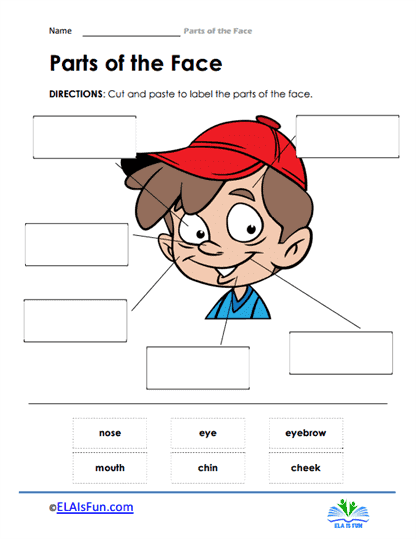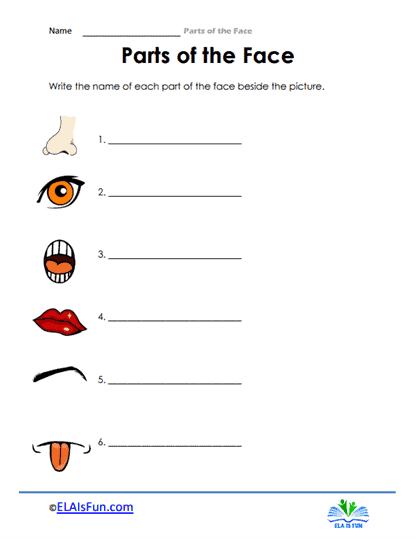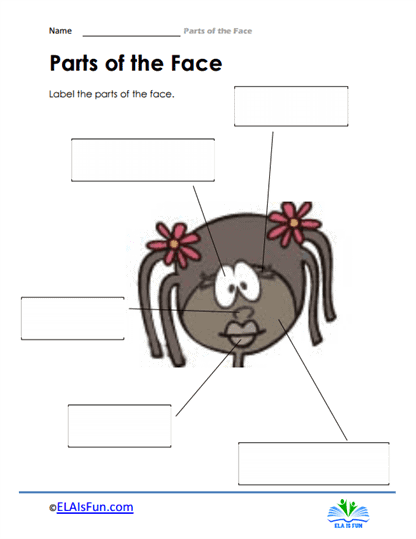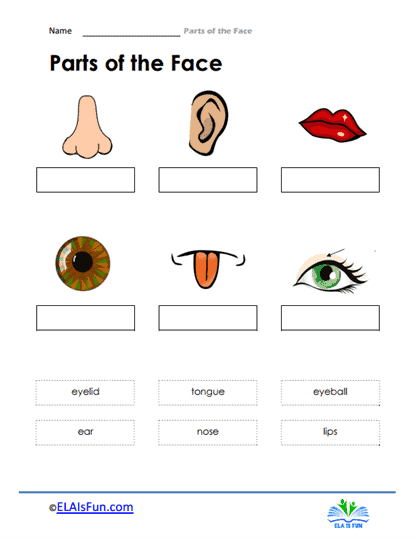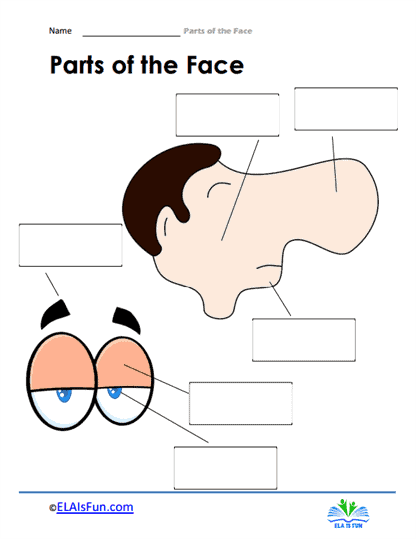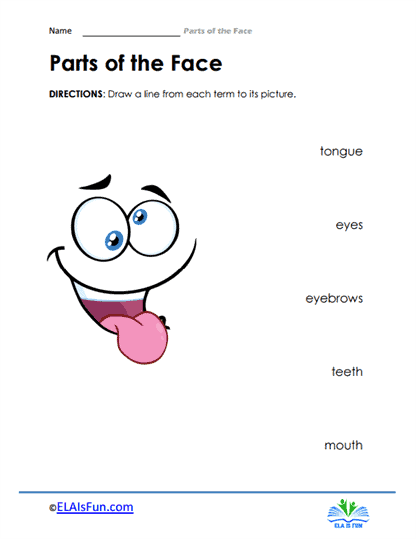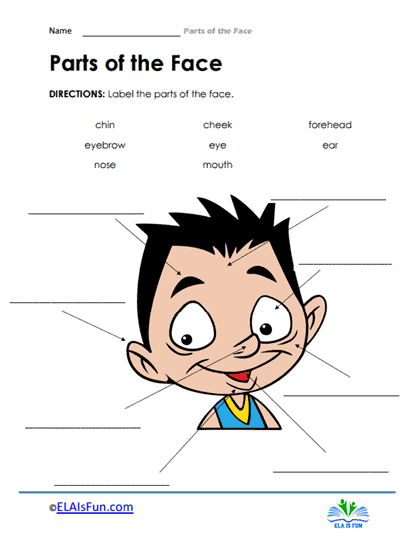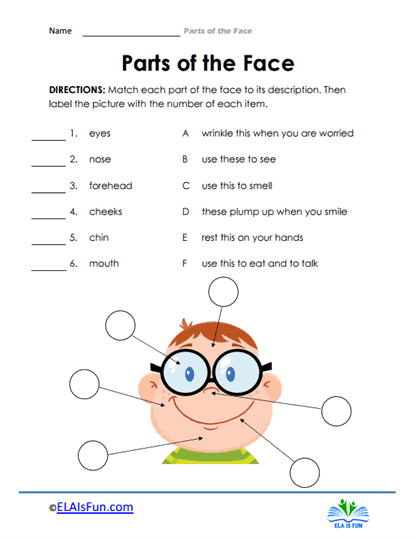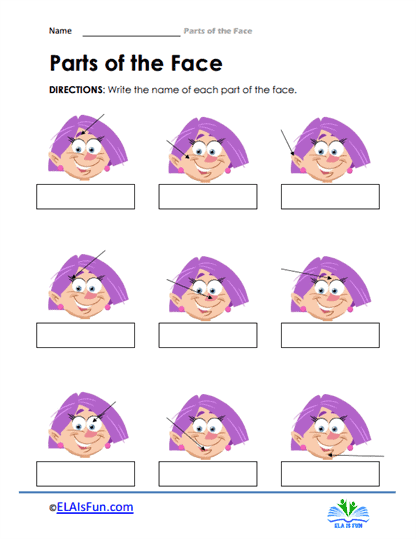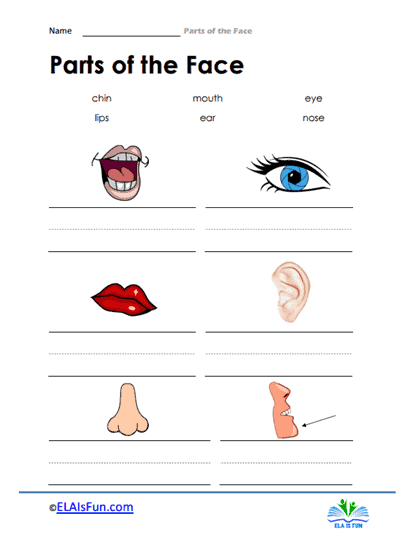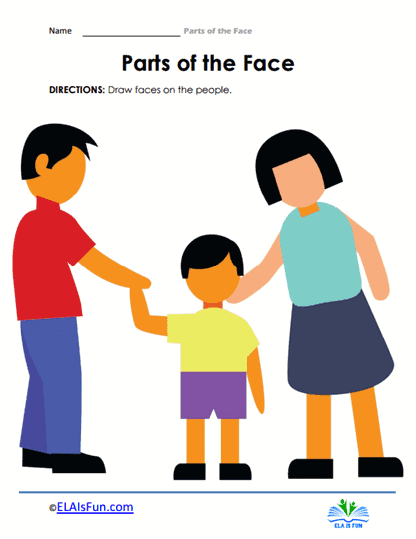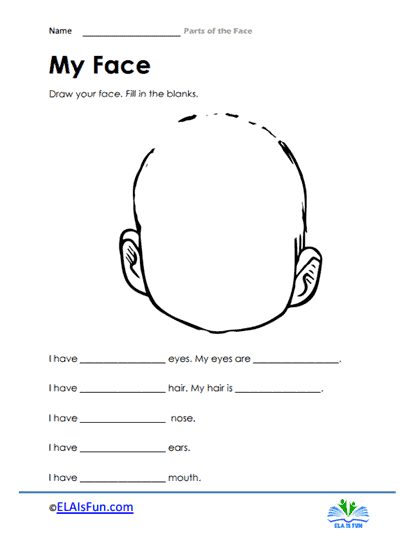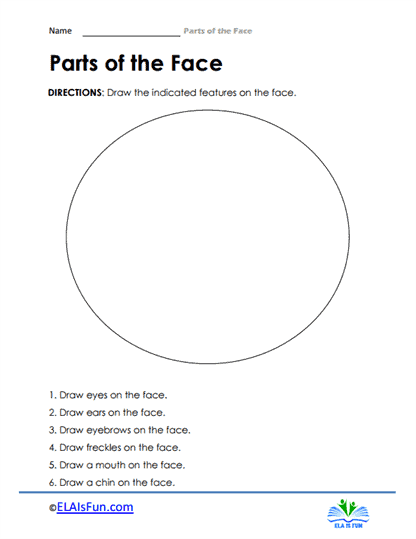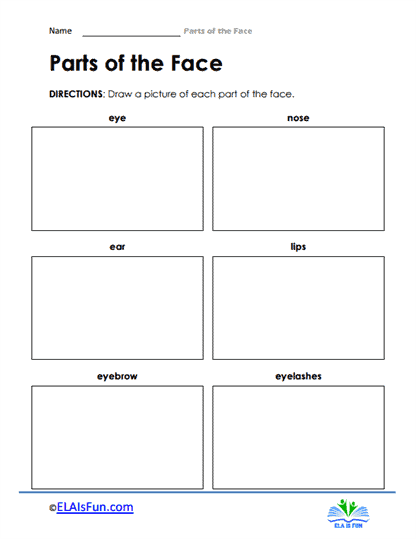Parts of the Face Worksheets
All About These 15 Worksheets
Preschool is a crucial stage in a child’s development, marked by rapid cognitive, social, and emotional growth. Engaging activities that promote facial recognition, enhance fine motor skills, and encourage self-awareness and empathy are essential for laying a strong foundation for future social interactions and academic success.
This collection of Parts of the Face worksheets for preschool students provides a valuable resource for educators and parents to engage children in hands-on experiences that not only help them identify facial features but also foster social and emotional development. These worksheets offer an interactive and enjoyable approach to learning that stimulates cognitive and motor skills, promotes self-awareness, and inspires curiosity about the world around them.
What Are Parts of the Face Worksheets?
Parts of the Face worksheets are educational resources designed to teach children about the different parts of the human face, their names, and their functions. These worksheets typically include a variety of activities aimed at helping children recognize, identify, and understand the features of the face.
Some common elements of Parts of the Face worksheets may include:
Labeling – Children may be asked to label the different parts of the face, such as eyes, nose, mouth, ears, cheeks, and eyebrows, on a diagram or picture.
Tracing – Worksheets may include tracing exercises for the names of the parts of the face, helping children become familiar with their spelling and improve their handwriting skills.
Matching – Children can match the names of the facial features with their corresponding images or descriptions.
Coloring – Coloring pages featuring faces or facial features can help reinforce children’s understanding of the parts of the face.
Cut and Paste Activities – Worksheets may involve cutting out images or labels of facial features and pasting them onto a blank face template, helping children practice their fine motor skills while learning about the parts of the face.
Reading Comprehension – Short passages or stories about facial features can be used to help children practice their reading comprehension and critical thinking skills.
Writing or Drawing Prompts – Worksheets may include prompts that encourage children to write or draw about their observations or experiences related to facial features.
Parts of the Face worksheets can be used in various settings, such as classrooms, therapy sessions, or at home, and can be adapted to suit different age groups and developmental levels. These worksheets help children develop their observational, language, and fine motor skills while teaching them about the anatomy and functions of the human face.
What Are the Parts of the Face?
The face is the most important part of our body, as it distinguishes the appearance of one person from another. It makes people recognize you, as the facial features of every person are different from the next.
As babies grow up, they start by recognizing their parent’s faces, then their siblings and relatives. They start putting names on those faces, which is how they get acquainted with new people.
Besides the countenance, the face is a fundamental part that gives your body the primary functions of hearing, vision, smell, eating, and breathing.
There are a lot of parts present in a face. However, 7 parts of the face are considered to perform the most crucial functions.
1. Forehead
The forehead is the topmost part of your face. It is crucial for the movement of your eyebrows, as the muscle of the forehead controls the muscles of the eyebrows. The forehead is important for expressing concern or anger, as the basic movement of its muscles expresses communication.
The forehead is composed of the frontal bone of the cranium, and the hairline marks the top of your forehead. The forehead makes up the upper third of your face, and the skull and scalp bound it on its sides.
2. Eye
The eye is a sensory organ and an essential part of your face. An eye collects light from our surroundings and converts it into nerve impulses that let us perceive and detect all the different objects, shapes, and colors around us.
Our eye is like a camera, and our eyesight is one of the biggest blessings of our life. It is important to take care of your eyes to prevent common eye diseases that can lead to blindness.
The main parts of an eye are the pupil, cornea, sclera, lens, and conjunctiva.
3. Cheek
The cheeks form the walls of your mouth and help retain food inside your mouth when chewing. Outside, cheeks muscles contribute to facial expressions like smiling or grinning, and the inside walls of cheeks are made up of mucous membrane. These mucous membranes secrete enzymes that help digest food while it is inside your mouth.
Cheeks comprises of three bony structures: zygomatic bone, mandibular bone, and maxilla.
4. Mouth
The two major functions of the mouth are speaking and eating. The nerve impulses generated when we put food in our mouth help us to chew and swallow it.
A mouth is necessary to provide nutrients to your body. It also lets you speak as the oral cavity helps generate your voice. The mouth also aids breathing when nasal breathing is obstructed due to congestion or flu.
The mouth has an oral-shaped cavity enclosed within the lips and cheeks, with gums, teeth, and tongue inside.
5. Eyebrow
Eyebrows serve to express emotions and promote communication through facial expressions.
The eyebrows are like shields that prevent sweat, oil, water, or other debris from falling into your eye, from the forehead, or hairline. Eyebrows also increase the beauty of the face, and people like to shape their eyebrows to complement their face shapes.
Eyebrows are composed of the brow ridge, which is very thick and prominent in males as compared to females.
6. Chin
The exact function or importance of the chin is still not precisely known. However, it is believed that the chin is a part of your face that lets you rest your jaw on certain surfaces. Chin makes up the part of your face below your lower lip, and several shapes of chins give each face a specific appearance, like heart shape chins, round chins, or dimple chins.
The chin makes the lower jaw more prominent, as the lower jaw or mandible shapes the chin.
7. Nose
The nose is a prominent structure that is situated between the eyes. It is an important part of the face that lets you breathe. It is also crucial for the sense of smell and filters the air inside your nasal cavity.
It comprises a pair of nasal bones and upper and lower lateral cartilage.
How To Teach Parts of the Face to Kids
Teaching kids about the parts of the human face can be fun and engaging. Here are some tips and activities to help you introduce these concepts effectively:
Use simple language: Start by explaining the different parts of the face using simple, age-appropriate language. Describe the functions of each part and how they work together.
Visual aids: Use visual aids such as posters, flashcards, or illustrations to help children visualize the different parts of the face. You can also use a mirror to show them their own face and point out each part.
Interactive activities: Engage children in hands-on activities that involve identifying and naming the parts of the face. For example, you can play a game where you point to a part of your face and have the child name it or do the same on their own face.
Sing songs and rhymes: Teach children songs or rhymes that involve the parts of the face, such as “Head, Shoulders, Knees, and Toes” or “If You’re Happy and You Know It.” This helps reinforce the concepts and makes learning more enjoyable.
Use stories and books: Read books or tell stories that involve the different parts of the face, emphasizing the role each part plays in the story. This helps children connect the concepts to a narrative, making them more memorable.
Drawing and crafts: Encourage children to draw or create crafts that represent the human face, labeling each part as they work. This helps them practice identifying and naming the parts of the face in a creative and hands-on way.
Play games: Play games that involve identifying and matching facial features, such as memory games, matching games, or puzzles. These activities make learning fun and help children practice recognizing and naming the parts of the face.
Role play and facial expressions: Engage children in role-playing activities that involve using their facial features to express different emotions or feelings. This helps them understand the role each part of the face plays in communication and emotional expression.
Encourage questions and curiosity: Foster a learning environment where children feel comfortable asking questions and exploring the topic further. Answer their questions and provide additional information or resources as needed.
Be patient and consistent: Learning about the parts of the human face may take time and practice. Be patient and consistent in reinforcing the concepts through different activities and daily routines.
Remember to keep the learning process fun and engaging, using various teaching methods and age-appropriate activities to help children grasp the concepts of the parts of the human face. With time and practice, they will develop a better understanding of facial features and their functions.

